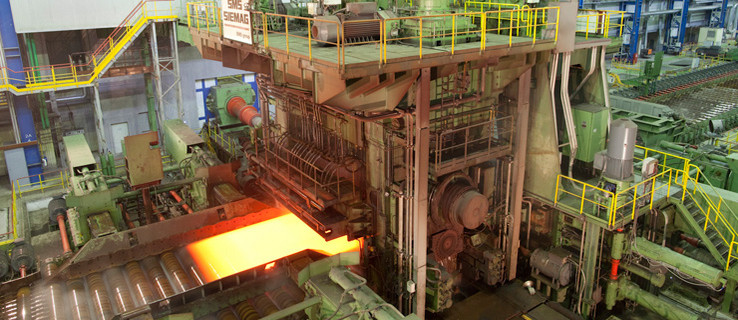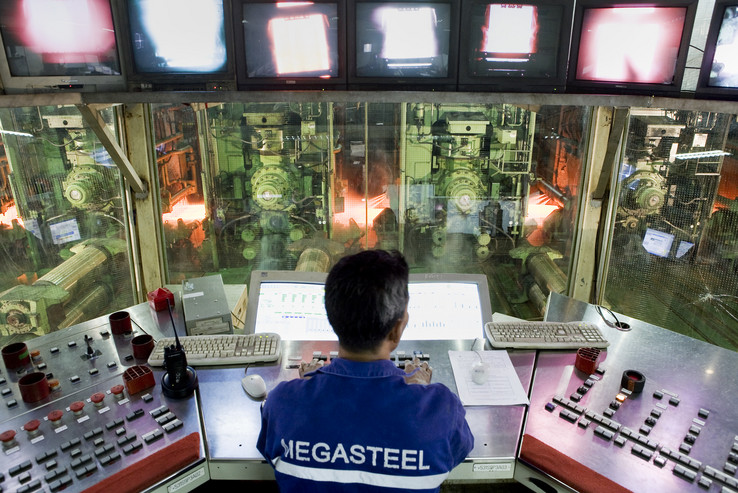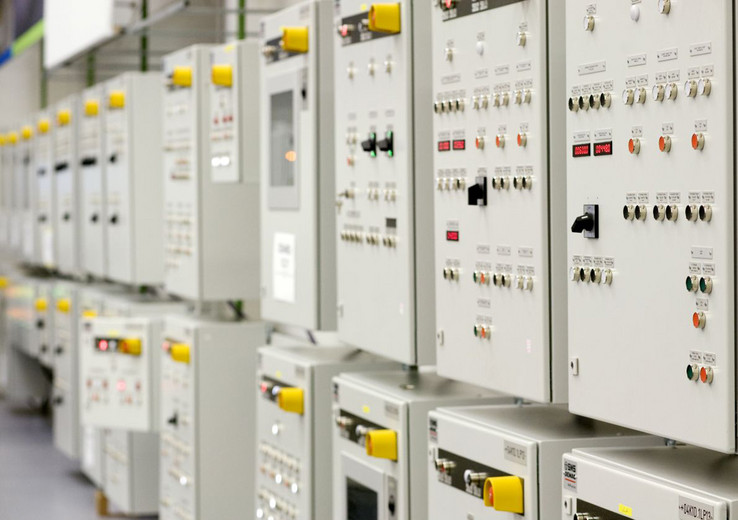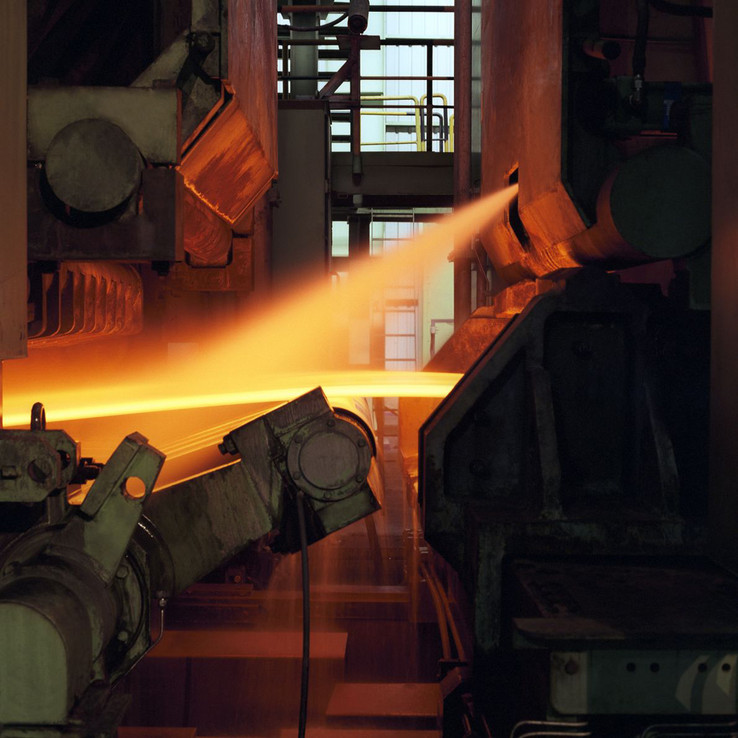SMS Siemag uses the EPLAN Engineering Center as the basis for design
SMS Siemag, a worldwide leading supplier of plants for metallurgical and rolling mill technology, uses the EEC to design large, highly complex, individual plants – and benefits from the advantages that the standardization and automation of design tasks offer.
The EPLAN Engineering Center (EEC) is ideal for more than just conventional variant design in mechanical engineering. SMS Siemag, a worldwide leading supplier of plants for metallurgical and rolling mill technology, uses the EEC to design large, highly complex, individual plants – and benefits from the advantages that the standardization and automation of design tasks offer. When SMS Siemag engineers design a complete steel mill, a continuous casting plant or a rolling mill, clearly no plant is like another. This also applies to the plants' electrical equipment whose design and manufacturing falls under the responsibility of the electrics and automation business area.
High degree of reuse in special plant engineering
Is it possible to standardize, and above all automate, such a process? This question always comes up because plants are becoming more and more complex while development times are continually decreasing. Whoever answers this question with yes certainly has a lot of fantasy and a pioneering spirit. Because recognized methods, such as product configurators, are generally used in mechanical engineering or by component manufacturers who vary existing basic concepts and models, but are not often used in classical special plant engineering.
Basic engineering in SAP
SMS Siemag has dared to take this step and has decided to use the EPLAN Engineering Center (EEC). Martin Schneider, Director of the Plant Engineering und Hardware Design division: "Our objective was to have a common design basis across all product areas and all locations. Working together with EPLAN Consulting, we were able to achieve a continuous process that considerably improves the efficiency and quality of the engineering workflow.
What is the process?
First, SMS Siemag developed SAP-PCC, an SAP-based software program for basic engineering that manages all master data and movement data. This was used to develop the functional plant structures and to represent plant field levels and the content of motor and component lists. These field components were then linked to the automation structures and the security areas. This basic information was transferred in the form of an extended motor and component list (MaC list) directly to the EPLAN Engineering Center (EEC).
Rules and standardized functions in the EEC automatically synchronize this data with the technical databank. The result flows into detailed engineering, and the electrical engineering is documented with EPLAN Electric P8. The EEC was integrated into the existing ECAD landscape exactly between basic and detailed engineering. What is special is that the Engineering Center and the EPLAN Electric P8 parts database directly access, via an interface, the CAE system's "technical database" that is stored in the SMS Siemag ERP system. This allows the electrical engineers to create a MaC list and take the data from SAP-PCC or take the parts data for EPLAN Electric P8 directly from the "technical database".
Define important details early on
To obtain as detailed a plant description as possible in the basic engineering phase, SMS Siemag defined a "typical type" for each field device that described the electrical characteristics. Also, the structure of the components was entered in SAP-PCC as soon as the engineer defined the bus system. And the security technology was specified by defining the areas of risk and the control circuits. Martin Schneider: "We transfer this very extensive data from SAP-PCC to the EEC, where it is automatically transferred to EPLAN Electric P8, i.e. to detailed engineering in electrical design. This is a very elegant solution that saves a lot of time in data maintenance. Just as important is that we now have a totally different workflow. Previously, the engineers copied and changed existing EPLAN projects. Now they make selections and generated the EPLAN projects – with very little time and effort.
Comprehensive preliminary work
That may sound simple and logical, but it requires a lot of preliminary work. Martin Schneider: "Without a doubt, the EEC provides the leverage needed for standardizing and automating the design process. But it only provides the tools; the user has to define the contents. Therefore, it is very important to very carefully define in advance what should be represented and in what level of detail. SMS Siemag decided to store components with different levels of details in the EEC. This allows the engineers to call up whole machines and plant sections as well as individual components.
Degree of automation grows step by step
SMS Siemag proceeded step by step with the implementation of this new, standardized design method, and initially filled the EEC with records for the field levels and the control consoles. The next step will be the MCCs and the drive technology. At the plant level, they started by dividing a cold rolling mill into "EEC-compatible" components and will now continue with the other plant types (e.g. hot rolling mills, steel mills, continuous casting plants). Those responsible are aware that some "delta engineering", i.e. manual work in EPLAN Electric P8, will still be required. Martin Schneider: "We won't be able to automatically generate all the electrical documentation for all trades.
But that isn't our real objective. Our real objective is to increase the degree of automation step by step. True progress was made when the first pilot projects were designed with SAP-PCC, EEC and EPLAN Electric P8. For control consoles and at the field level, we have been able to generate nearly all of the schematics directly from the EEC – and we work continuously in a device-oriented and object-oriented manner. An interface to enclosure layout is planned in the medium term. With the rollout of the hardware engineering systems in SMS companies located in China and India, global networking and standardization will grow even more.
The special focus of the electrics and automation business area is not to save on personnel, but to accelerate the design process. A typical plant has a delivery time of 24 to 30 months, and 12 to 14 of those months are attributable to engineering. Shortening this time would benefit both the manufacturer and the customers. This time reduction will not just be due to conveniently configuring the plants with the EEC, it will also be due to other factors such as the immense time savings – and simultaneously improved quality – when creating the documentation, which will continue in all subsequent processes.
Ideally prepared for simultaneous engineering
The EEC also provides the prerequisites for improving the division of tasks among the various design locations, which can now all work with a common data basis: SMS Siemag projects can increasingly be developed according to the simultaneous engineering principle. This makes standardization a location-wide, not just a product-wide topic. Working with EPLAN Electric P8 opens up other time-saving potential for SMS Siemag. Martin Schneider: "Only the functions that can't be realized in P8 should be implemented in the EEC. We work a lot, for example, with the parts master navigator to quickly select parts and devices. We will also use the new EPLAN Pro Panel Professional for planning enclosure layouts as soon as it is available in the next EPLAN Platform release."
A clear "yes" for standardization special plant engineering
SMS Siemag can now answer the initial question of whether product configuration is possible in plant engineering with a resounding "yes". The electrical engineers are able to copy entire plants and use them as template projects or, at the lowest level, the component level, to select devices with all the relevant data and cross references. Martin Schneider summarizes: "Through interdisciplinary standardization we achieve a high re-use rate, save time and work even more intensively together across all locations." What advice can he offer other potential EEC users? "The real work has to be done up front: Almost everything can be represented in the EEC – at any level of detail desired. You have to take the time up front to develop a clear concept of how the EPLAN Engineering Center is to be used – that's the way to open up the most optimization potential."
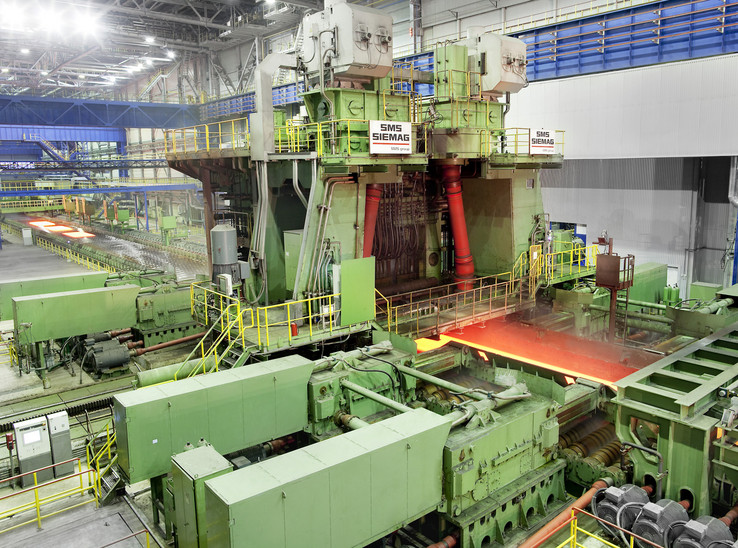
SMS Siemag produces plants for processing steel and non-ferrous metals such as continuous casting plants and hot and cold rolling mills – the output side of a hot plate mill with edger is shown here.


